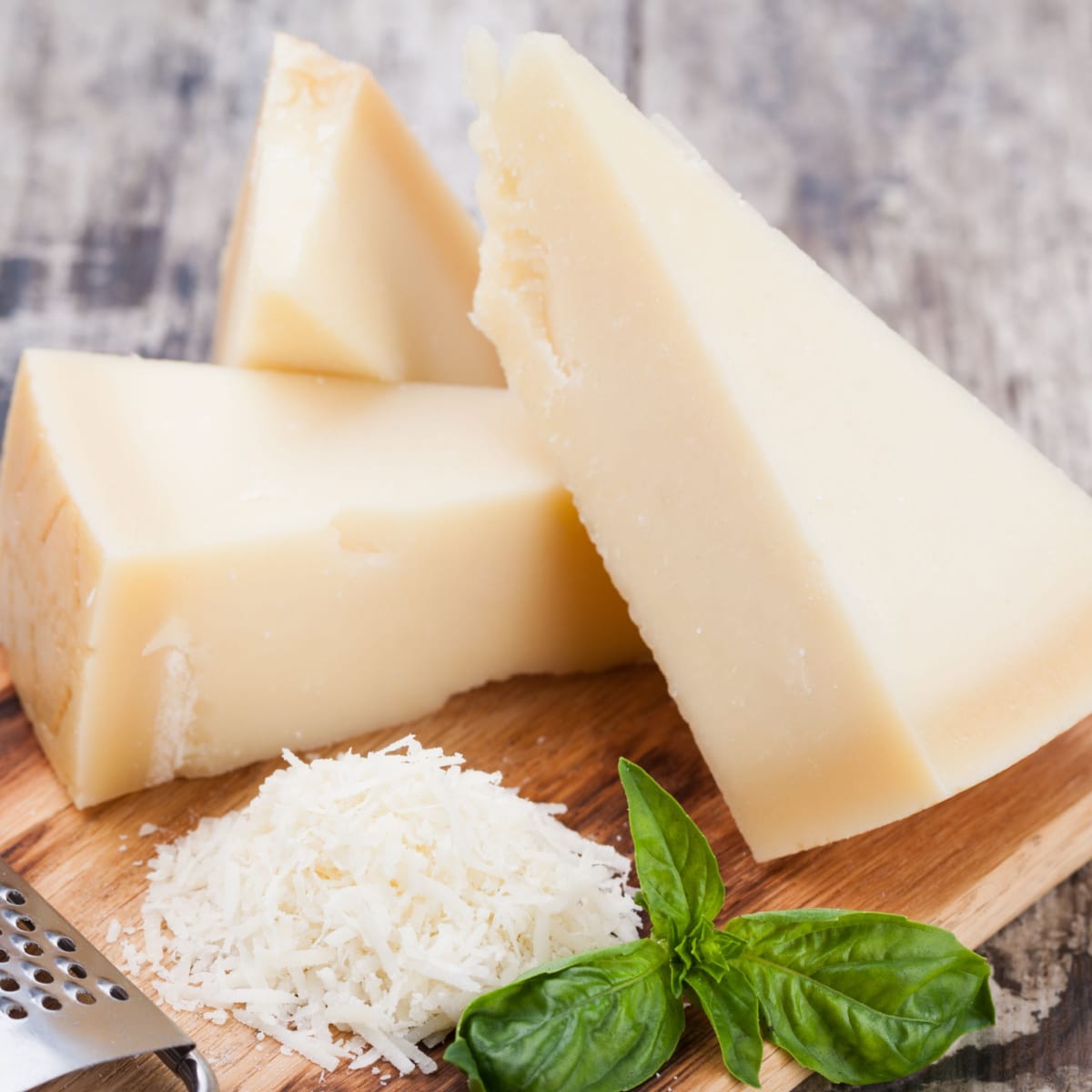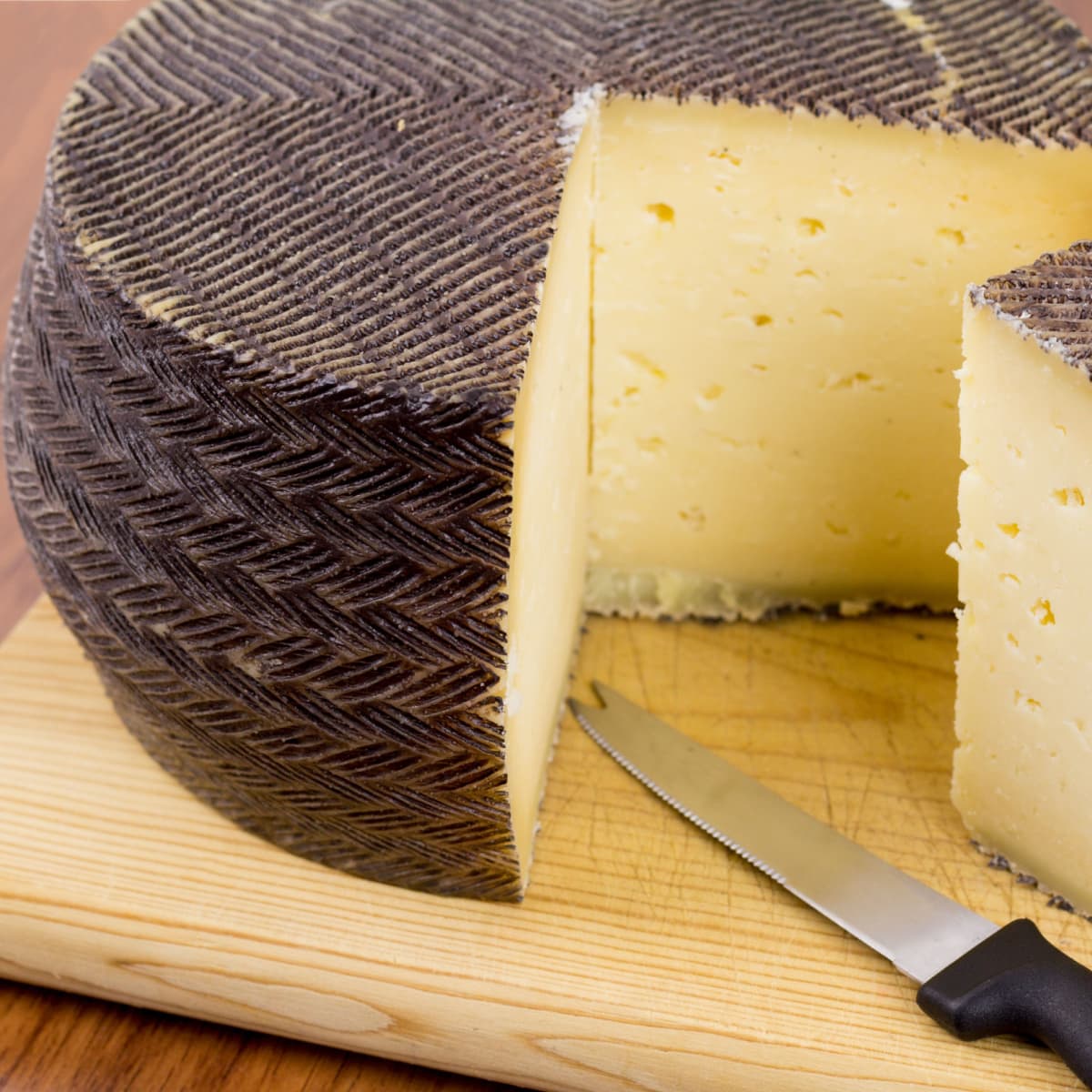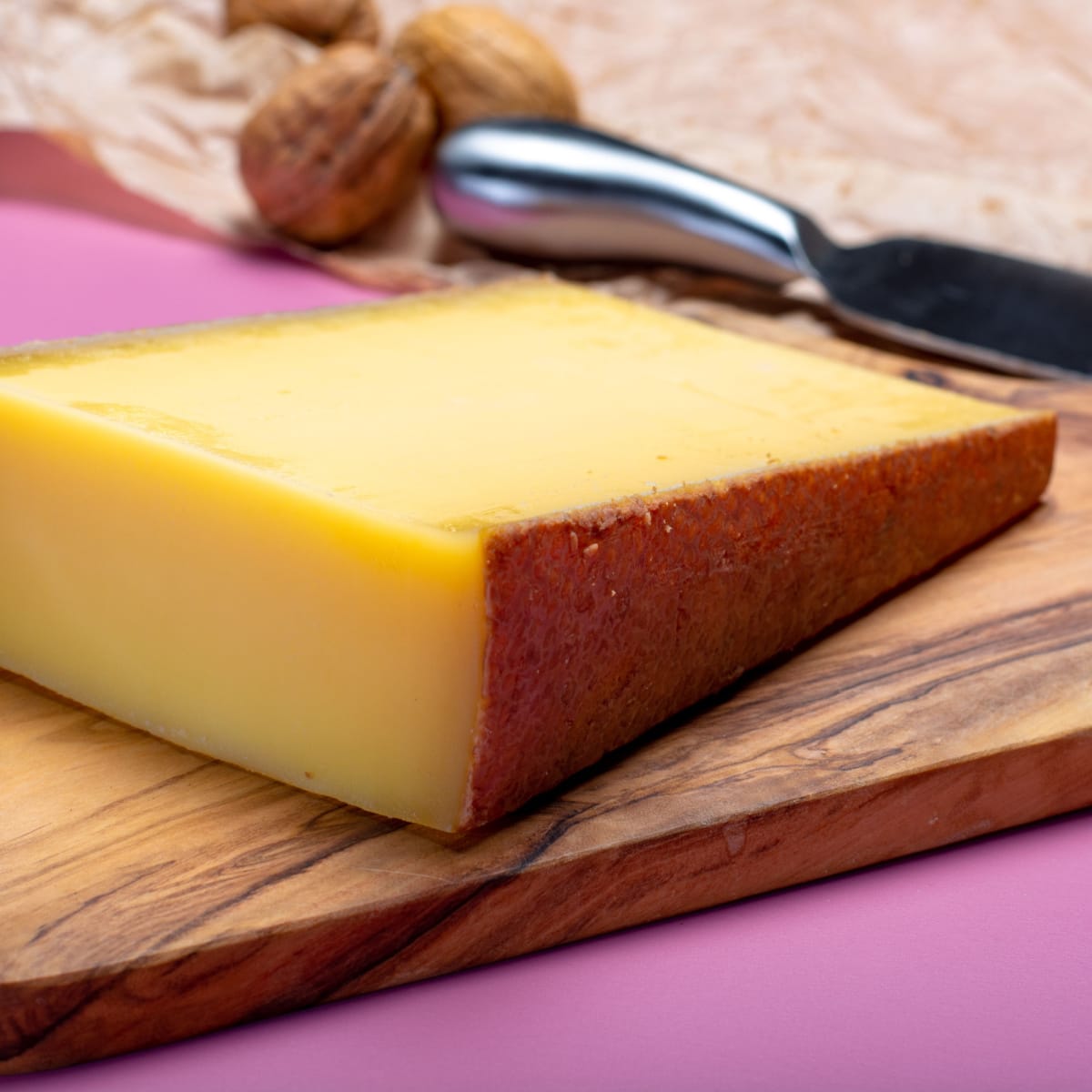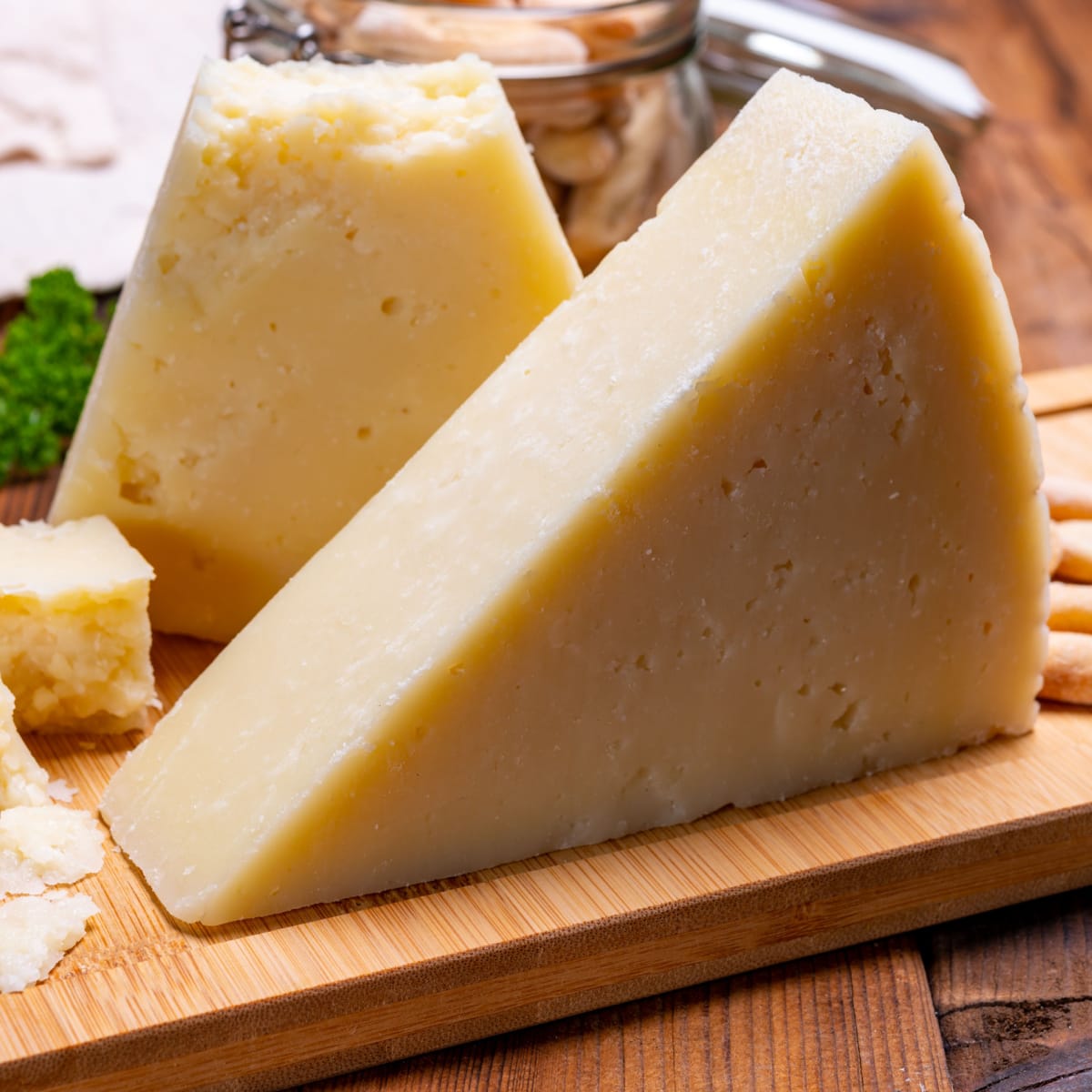If you’re looking for the best Asiago cheese substitutes, I have you covered!
Asiago cheese, with its rich flavor and delightful texture, is a staple in many kitchens. But what happens if you don’t have any?
Fear not, cheese aficionados! There’s a world of delicious Asiago cheese substitutes to explore.

These tasty alternatives can transform your dishes into mouthwatering masterpieces.
From Parmesan to Grana Padano to Gruyere, they all bring a dash of culinary magic to your meals!
What Is Asiago Cheese?
My first introduction to Asiago cheese was Panera’s Asiago cheese bagel. Since then, I’ve had a bit of an obsession with this nutty cheese.
Asiago cheese is an Italian cheese that’s very similar to Parmesan. It has a strong nutty flavor with a kiss of creaminess.
Authentic Asiago hails from the town of Asiago in Italy. And it comes at a pretty steep price point! If you want the real deal, look for the D.O.P. or D.P.O sticker.
Copycats at the supermarket may not come from a small town in Italy. But they still capture its buttery and nutty nature. Plus, they’re much more affordable!
You can use this cheese (or the copycats) in many tasty Asiago dishes.
But similar cheeses will do the trick if your cheese drawer is woefully out of Asiago.
And there are even some vegan options, too!
Best Asiago Cheese Substitutes
Nothing is more heartbreaking than finding out you’re fresh out of Asiago.
If your recipe calls for this special cheese and you don’t have it on hand, these substitutions work in a pinch.

1. Grana Padano
In the Asiago look-alike contest, Granda Padano is the clear winner. And the taste is almost identical.
Granda Padano is a hard cheese, similar to Asiago, with a nutty and buttery finish.
When used in recipes, it melts the same way as Asiago and has a similar mouth feel. The downside? It’s hard to track down at the supermarket.

2. Parmesan Cheese
Parmesan is another near-identical cheese, and it’s much easier to come by. But I’m not talking about that stuff in the green bottle.
Fresh Parmesan cheese has a hard and grainy texture like Asiago. You can swap Asiago for Parmesan in a 1:1 ratio.
While Asiago is more savory, freshly grated Parmesan has more fruity notes with a hint of bitterness.
The flavor profile is a little different but equally delicious!

3. Manchego Cheese
Manchego cheese is Spains take on Asiago. This Spanish cheese incorporates sheep’s milk instead of cow’s milk. But the texture and taste are very similar.
The texture of Manchego cheese is firm and gritty like Asiago, but the flavor is sweeter. It has a sharp sweetness and tastes fruity and bright.
The delicate nutty undertones are a great Asiago copycat. It’s a potent cheese, so taste it before piling it on your pasta.
While it has an amazing flavor, some feel it’s too intense.

4. Provolone
Provolone cheese is 100 percent Italian and melts similarly to Asiago. Plus, it’s easier to find at your local supermarket.
There are many types of Provolone cheese. Provolone Dolce is sweet, while Provolone Piccante is spicy.
To capture the nutty flavors of Asiago, opt for a younger cheese that’s more nutty and savory.
And since it has a similar texture to Asiago, you can use it as a 1:1 swap in most recipes.

5. Gruyere
Gruyere is best for grating over fresh pasta as an Asiago swap. It’s a strong cheese, so consider yourself warned.
The texture is almost identical to Asiago and has a similar melty consistency. A quick grating of Gruyere over pasta earns you one Italian chef’s kiss.
It also has similar salty, nutty, and earthy flavors. It’s a stronger cheese, so a little goes a long way!
Use Gruyere on pizza, pasta, or make an amazing cheese dip.

6. Pecorino Romano
Like Manchego, Pecorino Romano uses sheep’s milk instead of cow’s.
The flavors of are very sharp and potent. It lacks the delicateness of Asiago.
However, the texture and consistency are almost identical. Be sure to taste-test Pecorino Romano before grating it on your pasta.
It’s just as nutty and buttery as Asiago, but the flavor is quite potent. Using a little and taste as you go is always a good idea.
It has an amazing punch of flavor, but its overwhelming sharpness isn’t for everyone.

7. Dry Jack Cheese
Pack your bags, we’re leaving Europe and heading to the States! Dry Jack cheese comes from California and is inspired by great Italian cheeses.
It’s very similar to Parmesan. It’s nutty and fruity with a similar hard texture to Asiago. And because it’s American, it has a familiar tang like Cheddar.
You can use this style of cheese for anything from pizza, dips, soups, and grating over pasta.
In the States, it’s much easier to come by and works just the same in many Asiago recipes.

8. Sap Sago
Never heard of Sap Sago before? Then let me introduce you!
Sap Sago is a Swiss-style cheese with a lower fat content and hard consistency similar to Asiago.
It’s also nutty like Asiago but has a fraction of the fat. The flavors are very mild and almost taste like cheesy butter. Yes, please!
If you want to keep calories low, it’s a great choice!

9. Oil-Cured Black Olives
On the hunt for non-dairy Asiago opinions? Oil-cured black olives are not only healthy, but they also capture general Asiago vibes.
When they come out of the jar, they look like prunes. But the salty, nutty flavors are very similar to Asiago cheese.
Oil-cured black olives are the perfect pizza topping when you want Asiago flavors, but none of the dairy (or calories).

10. Seasoned Breadcrumbs (Pancritata)
Pancritata (or seasoned breadcrumbs) make a killer pizza topping. These breadcrumbs have a hard texture similar to Asiago and salty, nutty flavor notes.
Don’t confuse Pancritata with Panko. Panko breadcrumbs don’t taste like anything.
Pancritata, on the other hand, tastes rich and nutty and delivers a ton of flavor to your dishes.
Pour them over a pizza or sprinkle them on a bowl of steamy pasta. Everyone will love a pizza with a Pancritata garnish.

11. Nutritional Yeast
Nutritional yeast is my secret weapon when I want to add a boost of nutty flavors. It’s a great source of vitamins and minerals, but it’s so much more than a nutritional boost.
Use it in soups or stews, or sprinkle it on fresh pasta or pizza.
While the texture isn’t quite the same as Asiago, the flavor is there.
And the best part? It’s 100 percent vegan!











